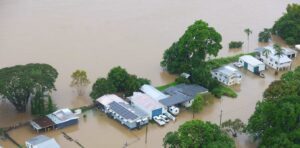Regulators praise insurer-broker alliance on NatCat education

Canadian insurance regulators say they are “encouraged” to see insurers and brokers collaborating to make sure Canadians receive and understand more information about their natural catastrophe (NatCat) risks.
Insurance Bureau of Canada and the Insurance Brokers Association of Canada (IBAC) have teamed up to develop enhanced training on natural catastrophes for brokers.
“IBAO is heavily involved in course development,” Insurance Brokers Association of Ontario (IBAO) chief operating officer Brett Boadway tells Canadian Underwriter. “The primary education deliverable is still to come. The course will be comprehensive and connected to the current and evolving regulatory environment.”
IBC says the training will be “designed to provide brokers and agents with guidance on how to help consumers better understand property risk, how policy coverages address that risk, and how homeowners may reduce that risk through landscaping, building retrofits, and other means.
“It will also eventually include training on risk awareness tools, once they are fully developed.”
The regulators posted a position paper, Climate Change, Natural Catastrophes and Consumer Awareness, last year, and they are “encouraged” by the industry’s response to the issues raised in that paper.
Phase I of that collaboration is for the industry’s salesforce to educate itself about the nature of flood, wildfire and earthquake risks, as the regulator notes. Phase 2 is to create “resources that can be used by the sector to support property risk conversations [with Canadians] at the point of sale and renewal of insurance coverage.”
CCIR has partnered with the Canadian Insurance Services Regulatory Organizations (CISRO) to help the P&C insurance sector address the recommendations in the 2023 position paper.
Also in the news: Court upholds broker regulator’s new rule on perceived conflict
That paper made clear many Canadians remain unaware of the NatCat risks to their property.
“While Canadians generally accept that NatCats are happening more frequently than in the past, only a minority feel like they are directly at risk of a variety of catastrophes,” the CCIR says in its paper. “For example, a 2015 survey by the Canadian Association of Direct Relationship Insurers (CADRI) showed that only 12% of Canadians (about 4.5 million people) believe that their property is at risk of an earthquake, whereas 24% (about 9 million people) of Canadians live in high-risk earthquake zones.
“This misalignment is also evident for flooding. A 2020 survey by Partners for Action, an applied research network based out of the University of Waterloo, showed that only 6% of Canadians living in designated flood risk areas know their property is at high risk, and 63% do not believe that flood risk will increase within the next two decades.”
Specifically, the regulators’ paper outlines four main consumer awareness gaps:
Low awareness of property-specific Nat Cat risk
Low awareness of available insurance coverage options
Low awareness of existing insurance coverage (as measured by the difference between uptake and consumers who think they are covered)
Low awareness of what is and is not covered under provincial Disaster Financial Assistance programs
To help close these knowledge gaps, CCIR’s paper makes several recommendations:
Improve disclosure of Canadians’ NatCat risks at the point of sale
Come up with best practices for telling Canadians about their NatCat-related insurance options
Take a simplified approach to summarizing coverage
Train and educate brokers and agents so they understand the products
Design innovative products and create incentives for consumers who take actions to reduce their NatCat risk
In the meantime, IBAO says it currently has on-demand courses available for brokers.
For example, Flood Risk Management in Ontario is a free course for IBAO members, built in partnership with Conservation Ontario, showing how flood risk is managed. Also, Managing Flood Risk, built in cooperation with Institute for Catastrophic Loss Reduction, is a free course featuring a broker panel on the brokers’ role in their day-to-day discussions with clients.
Feature image courtesy of iStock.com/skynesher


